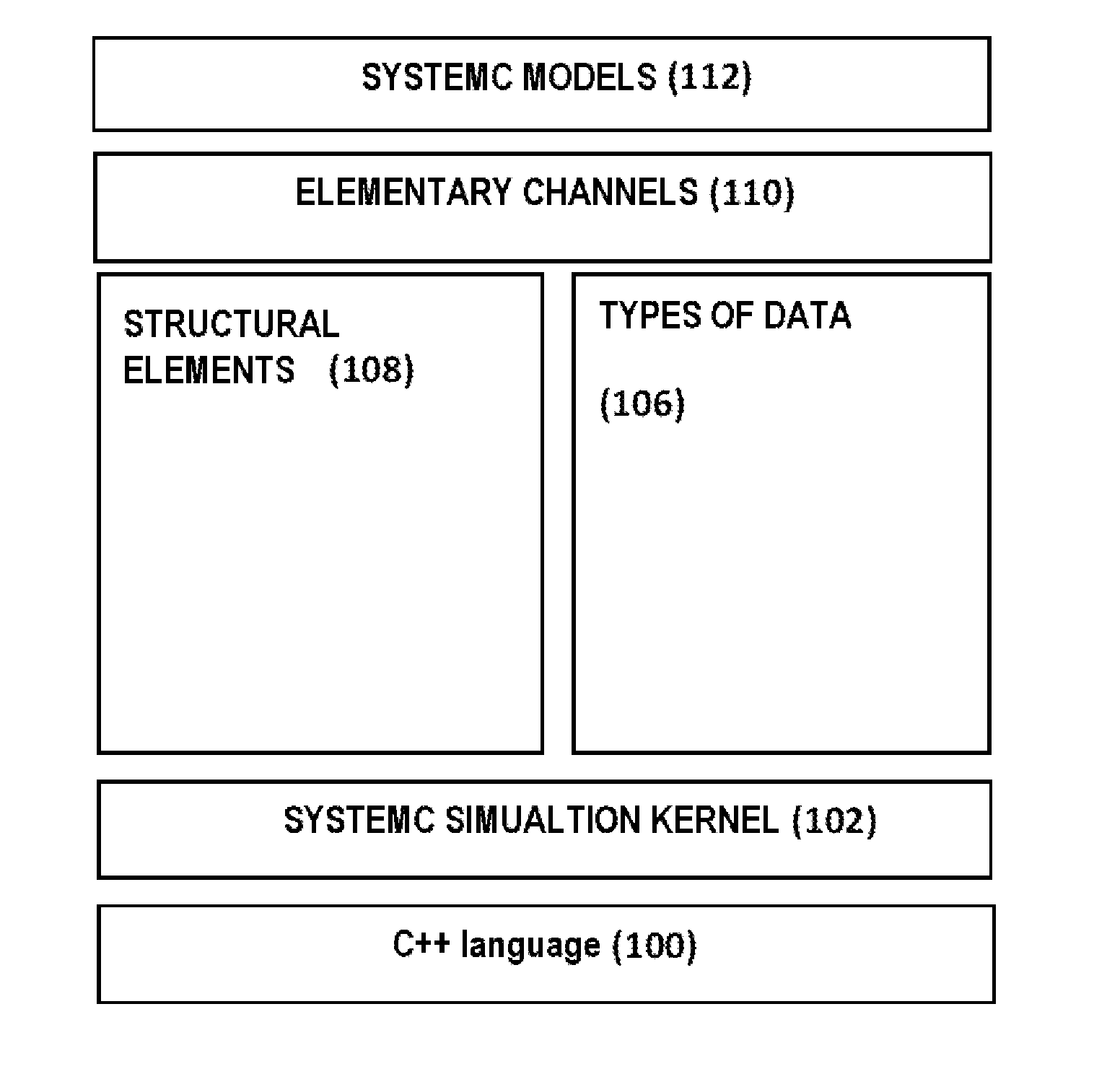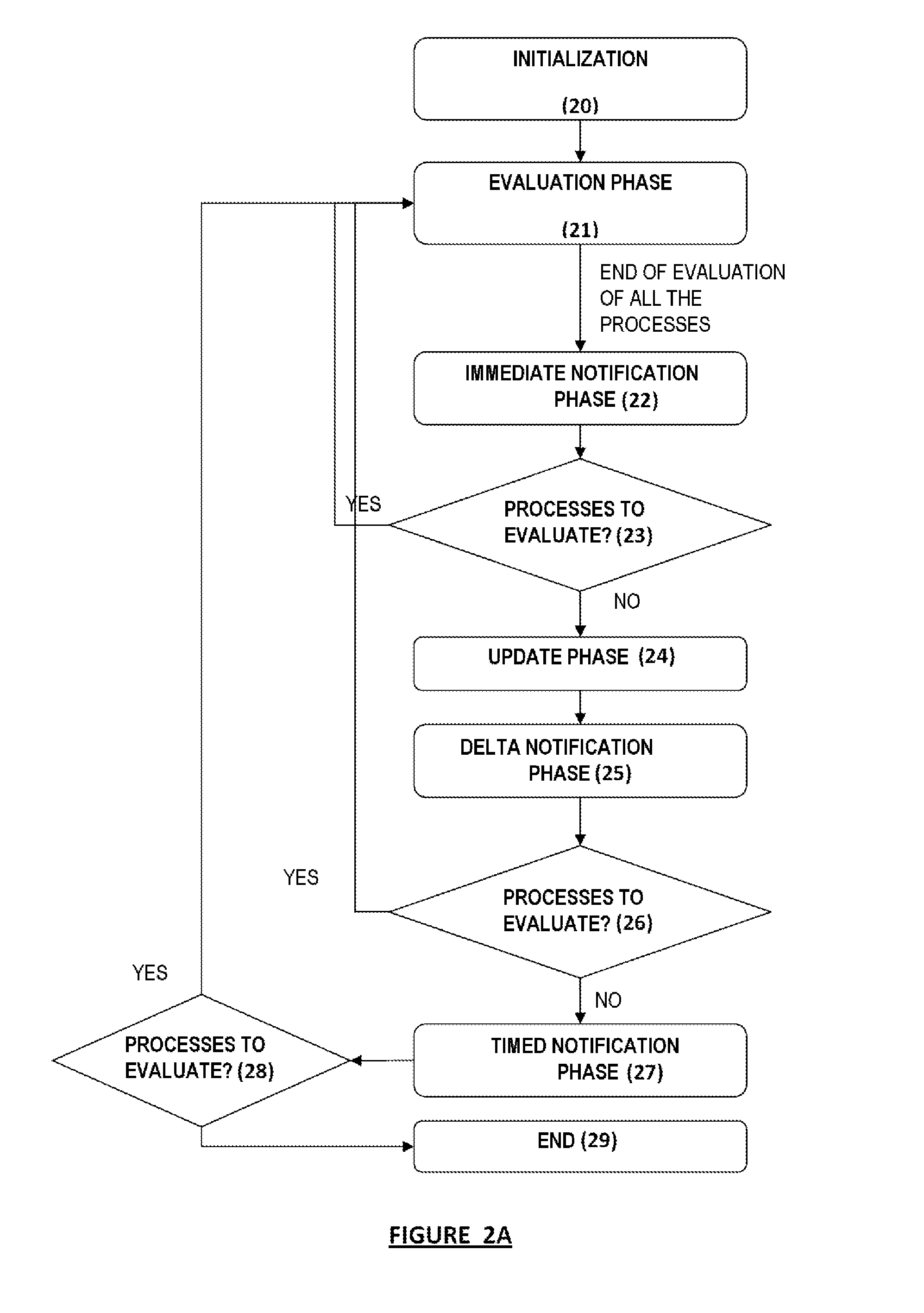Device and method for accelerating the update phase of a simulation kernel
a simulation kernel and update technology, applied in the field of prototyping tools, can solve the problems of inability to execute virtual prototyping solutions in the shortest time possible, too high cost of the design and fabrication phase, and inability to exploit the parallelism of the machines supporting their execution, so as to improve the situation
- Summary
- Abstract
- Description
- Claims
- Application Information
AI Technical Summary
Benefits of technology
Problems solved by technology
Method used
Image
Examples
Embodiment Construction
[0080]Although the reader is assumed to be familiar with the SystemC environment, certain notions are recalled hereinafter in relation with FIG. 1 and FIG. 2A in order to facilitate the understanding of the present invention.
[0081]FIG. 1 shows the software architecture of the SystemC library. This architecture is organized in layers. The layer 100 corresponds to the layer C++ which represents the basic technology on which the implementation of SystemC relies. The layer 102 represents the simulation SystemC kernel. The SystemC kernel is based on a cooperative sequencing and the notion of “delta” cycle for modeling the concurrence between the constituent elements of the simulator. The layer 106 represents the types of data. These data types include both the types associated with the software programming and the types associated with the description of the hardware.
[0082]The layer 108 represents the structure used in SystemC for describing the hardware system. The SystemC library has a...
PUM
 Login to View More
Login to View More Abstract
Description
Claims
Application Information
 Login to View More
Login to View More - R&D
- Intellectual Property
- Life Sciences
- Materials
- Tech Scout
- Unparalleled Data Quality
- Higher Quality Content
- 60% Fewer Hallucinations
Browse by: Latest US Patents, China's latest patents, Technical Efficacy Thesaurus, Application Domain, Technology Topic, Popular Technical Reports.
© 2025 PatSnap. All rights reserved.Legal|Privacy policy|Modern Slavery Act Transparency Statement|Sitemap|About US| Contact US: help@patsnap.com



